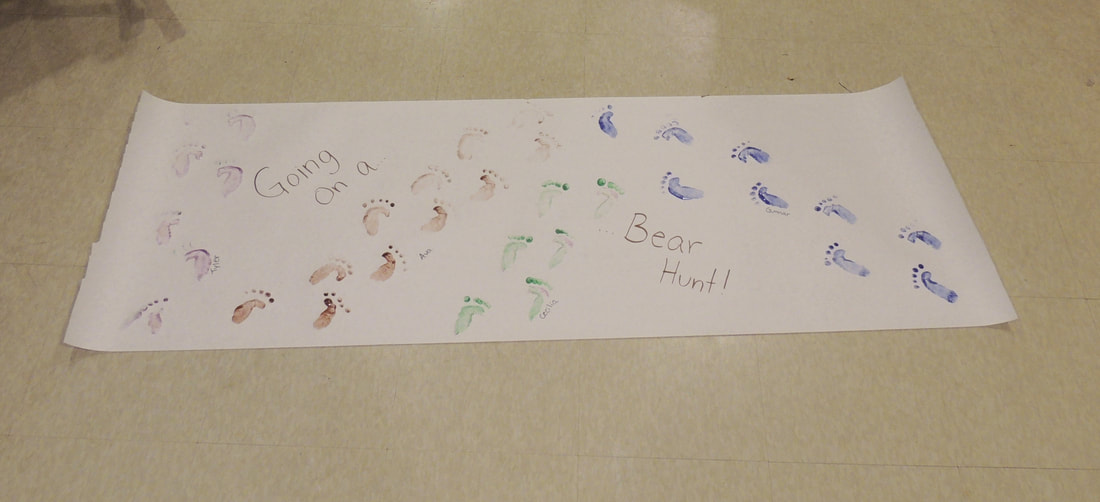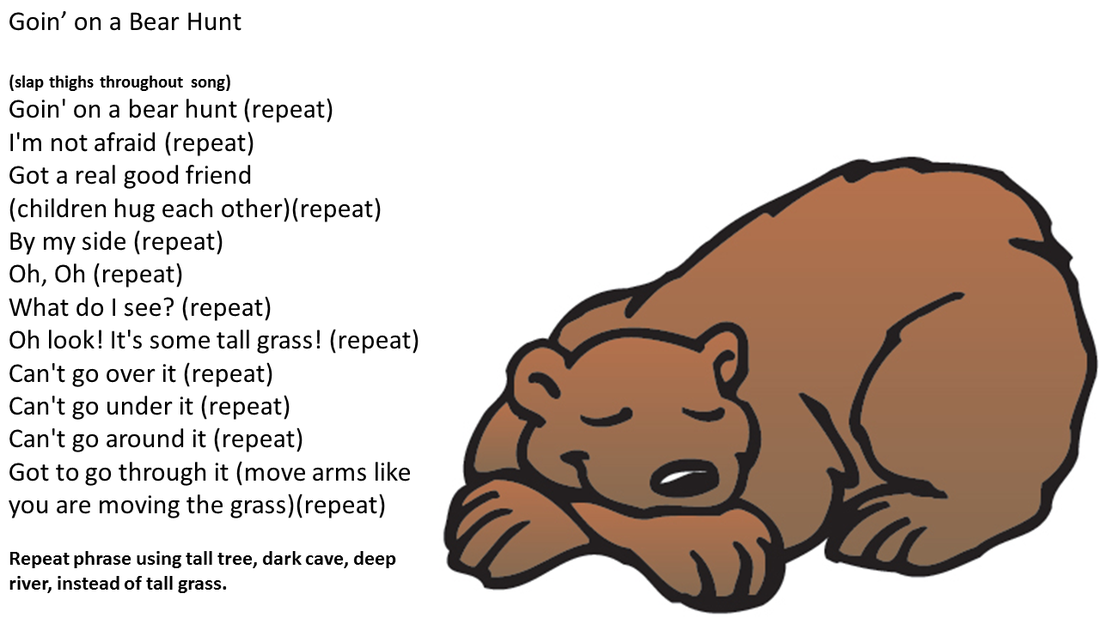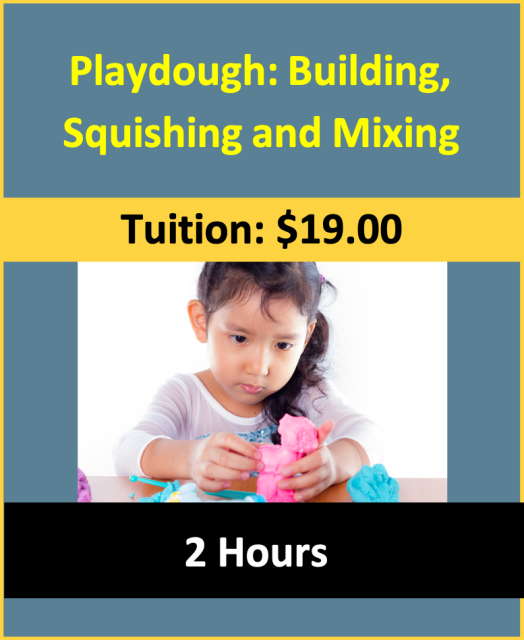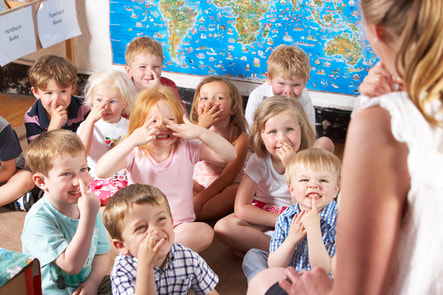Bear Hunt
Lesson Plan:
|
Activity:
Bear Hunt
Lesson plan developed by Debra Hasbrook, M.Ed.
Age Group:
* Lesson plan objective and assessment can be adapted to use this activity with toddlers.
|
|
Procedure:
|
Objectives:
Children will:
III.9.3a
Materials:
|
- Sing the Going on a Bear Hunt song with your group.
- With bare feet, stepping in one color of paint and walking the full length of the butcher paper.
- Should be at least 6 feet long.
- The children can pick one color.
- For those who do not want to get their feet painted you can use flip flops, which make a fun foot print.
- After it drys put it up on the wall, put each children’s name by their footprint, and a picture if you have it.
- Then read Going on a Bear Hunt, and have the children make the elements of the bear hunt throughout the week and put them on the poster paper. Such as bears, grass, a hill, cave, river, etc.
- They can make up their own things that they might see such as birds, trees, frogs in the water etc.
Assessment:
- After creating the Bear Hunt project ask the children how making this journey would be different if they were walking the bear hunt alone? Point out how all the feet were going in the same direction, together as a bear hunt community. Ask the children to retell the art process and explain how it would be different if they were not completing it as a group.
Dramatic play extension: Set up a dramatic play area with flashlights, safari hats, walking sticks, etc.
Click on the course icon for enrollment information.
Circle Time
|
Circle time is an essential activity of the day. A well-planned circle time experience is fun, interactive and provides an opportunity to introduce concepts the children need to learn. Circle time also stands as a cooperative part of the day when students and teachers come together to achieve a goal. At times this goal is learning something new, and other times the goal is to complete a daily task as part of a bigger schedule. Circle time is an opportunity to build community, present ideas, explore literacy, and experience music and movement. Circle time is an excellent opportunity to practice skills that children will need to be successful in school. This includes following directions, self-regulation, and executive function. All of this can be done to build a sense of community within the classroom.
|
Building a sense of community in the classroom relates to a sense of belonging to a group while being valued, respected and appreciated. A classroom community is welcoming and values all individuals. Building this community element in early childhood programs has many benefits including strengthened peer relationships, trust, a sense of security, and a love for learning.













